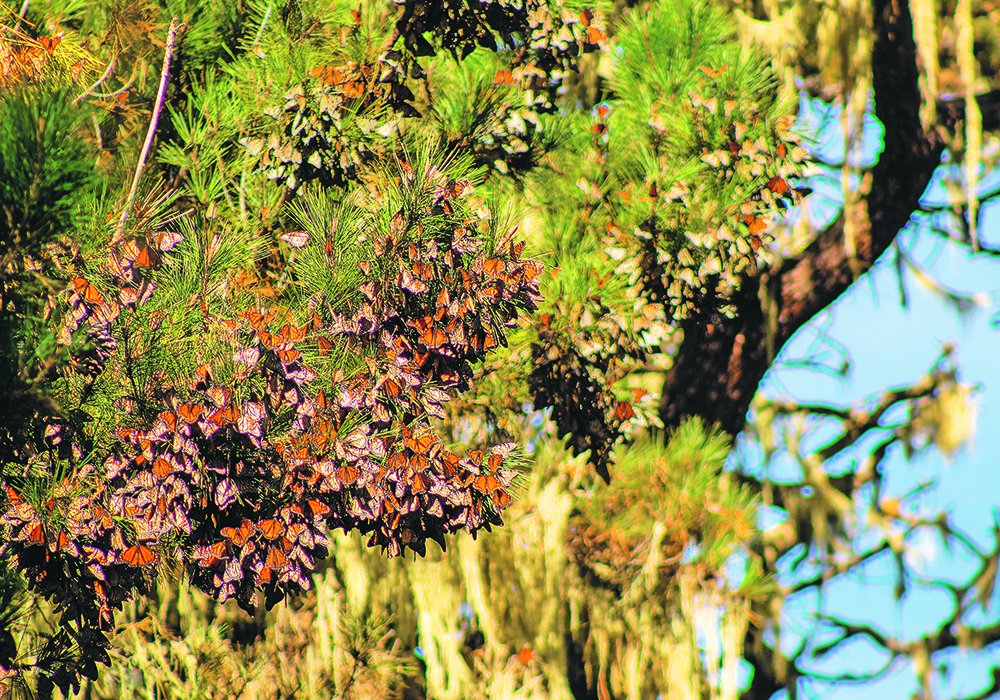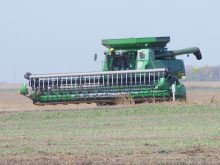Conducting population counts and planting natural habitat such as milkweed can help keep that numbers at viable levels
The monarch butterfly migration is a rare phenomenon, taking several generations to make one round trip.
All along their migration route, from Canada to Mexico, efforts are being made to protect existing overwintering areas, or to re-establish historic ones. This species, through its drastic decline in population since 2018 at only one percent of their historic numbers as measured in 2020, draws attention to the plight of many vital insects.
The monarch butterfly leaves southern breeding areas of Canada each autumn, and can fly along either of two main routes: along the east side of the Rocky Mountains, and down into Mexico, or along the Pacific Coast, then overwintering along California’s subtropical shore line. The decline in monarch numbers has been mainly due to damage to their overwintering sites, with other factors also at play, such as overuse of pesticides and climate change.
Read Also

Bunge’s crop mix is changing
Bunge has predominantly been a soybean processing firm, but that’s about to change after the merger with Viterra with softseed processing and grain merchandising gaining ground.
Many of the overwintering sites on California’s Pacific Coast, while still used by monarchs, have been damaged with over-trimming of the trees where the butterflies rest. These sites, whether they are publicly owned, private or a combination, often have various bodies managing the land, but no unified focus on maintaining the sites with monarchs in mind.
While regional, state and federal policies for promoting and enforcing the needed measures to protect these essential sites are in flux, there are many things individuals from Canada, the United States and Mexico can do to help these butterflies.
Emma Pelton, senior conservation biologist at the Xerces Society for Invertebrate Conservation (XSIC), with its headquarters in Portland, Oregon, has been measuring the size of the Pacific monarch population through the Thanksgiving and New Year’s monarch counts. These counts have been conducted for more than two decades.
There are other ways that monarchs can be monitored by anyone, such as through the iNaturalist app, she said. Plus, iNaturalist can also track the locations of plant life, such as milkweed and other rich nectar-producing flowers, which are part of the monarch support system. Thus, citizen scientists who make use of apps such as iNaturalist can become part of the monitoring system.
Those who want to do more than watch and report can also do plantings. Researching which butterfly friendly plants are indigenous to your region and setting aside fringe areas of working farm fields, corners of private gardens or even just planting containers of sunflowers can be of help for not just monarchs but all pollinators.
On a larger scale, XSIC has been providing California Habitat Kits to provide new, or restore established, overwintering sites for the monarchs. City parks, owners of farms or Indigenous held lands and schools can apply to XSIC to receive a regionally appropriate kit.
Pelton encouraged those who want to source their own local seeds for butterfly friendly gardens, calling it a great way to minimize worry about whether seeds were treated with insecticide or have treatment residues.
Pelton said with climate change, projections show that monarchs “are going to probably continue to go further north. I think southern Canada is going to continue to become a more important place for summer breeding.”















